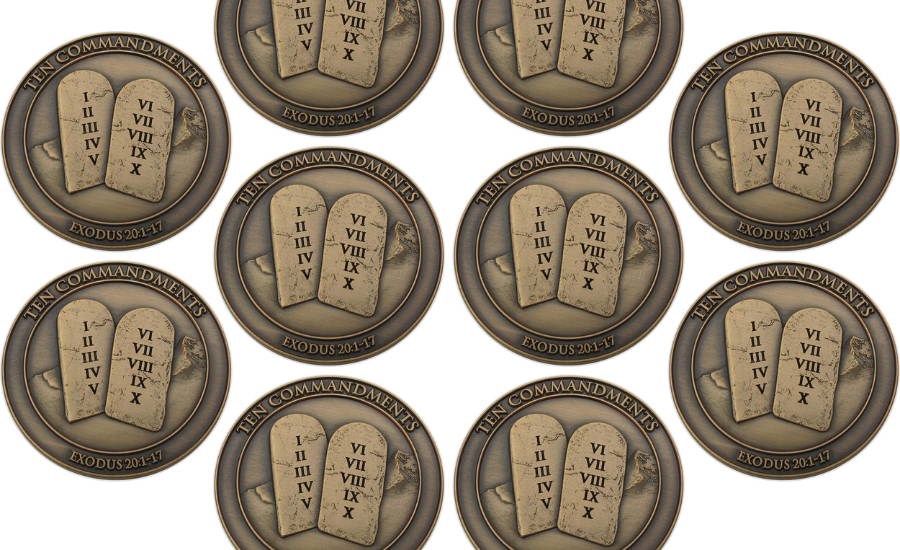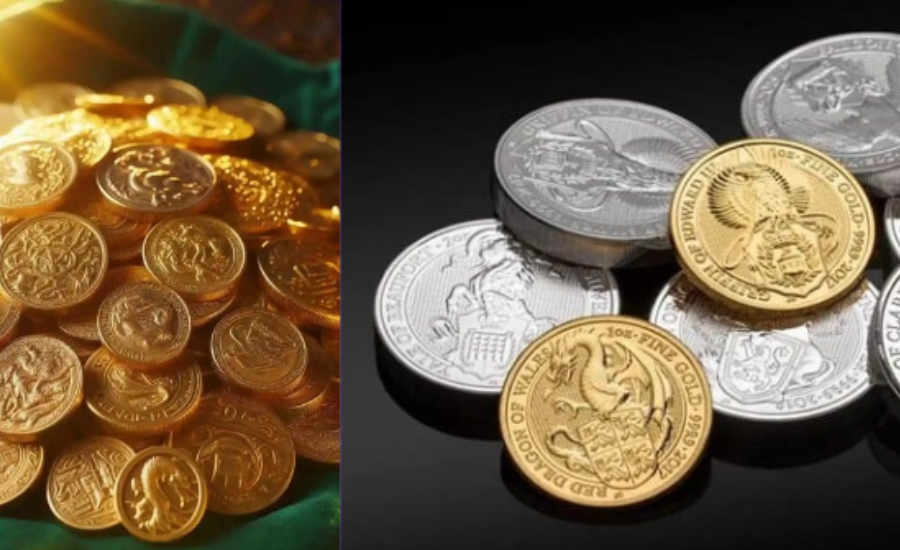The New York Times has investigated the imagery ofbiblical coins nyts in scriptural anecdotes, revealing insight into their more profound implications. In old times, biblical coins nyt were something beyond cash; they addressed abundance, power, and obligation. The anecdotes frequently use coins to show moral and profound illustrations. For example, in the Story of the Abilities, coins represent the gifts and open doors given to people by God. How these coins are overseen mirrors one’s personality and loyalty. The people who contribute and develop theirbiblical coins nyt are lauded, while the individuals who conceal them out of dread are censured.
Story Of The Lost Coin

The Illustration of the Lost Biblical Coins nytn is a story told by Jesus in the New Confirmation, tracked down in the Good News of Luke (Luke 15:8-10). It is important for a triplet of illustrations, including the Story of the Lost Sheep and the Anecdote of the Intemperate Child, all of which underscore the subject of reclamation and the delight of recuperation.
In the illustration, a lady has ten silver coins and loses one. She lights a light, clears the house, and searches cautiously until she tracks down it. At the point when she at long last finds the lost coin, she assembles her companions and neighbors to celebrate with her, expressing, “Cheer with me; I have tracked down my lost coin.”
The Story shows A Few Central Issues
The worth of the Person: Each biblical coins nyt addresses something significant, similarly as every individual is valuable according to God.
Tenacious Pursuit: The lady’s exhaustive hunt connotes the work and care God takes in searching out the people who are lost.
Euphoria in Recuperation: The festival after finding biblical coins nyt represents the tremendous happiness in paradise more than one heathen who apologizes.
This anecdote features God’s adoration and the delight that comes from apology and reclamation. It consoles adherents of their value and the lengths to which God will go to bring them back into the crease.
Meaning Of The Ten Biblical Coins Nyt
The Ten of biblical coins nyt, otherwise called the Ten of Pentacles, is a critical card in the Tarot deck that represents riches, security, and long-haul achievement. This card addresses the summit of difficult work and steadiness, prompting material overflow and a feeling of inheritance. Whenever the Ten of biblical coins nytns shows up in a perusing, it frequently demonstrates that you have arrived at a place of culmination and achievement in your excursion. This pride isn’t just about monetary achievement yet in addition about establishing a steady and secure climate for you as well as your friends and family. The card mirrors the significance of family, legacy, and the enduring effect of your endeavors on people in the future.
Notwithstanding material riches, the Ten of biblical coins nyt underlines the worth of local area and the emotionally supportive network that accompanies it. It recommends that your prosperity isn’t just an individual triumph yet additionally a common one, helping everyone around you. This card urges you to ponder the heritage you are building and the way that your activities today will impact what’s to come. An update genuine abundance isn’t simply estimated in financial terms yet additionally in the extravagance of connections and the feeling of having a place inside a local area.
Illustration Connects With Other Scriptural Stories

Stories are a special and strong showing device utilized by Jesus in the Good book. They are straightforward, appealing stories that convey further profound insights. One notable story is the Anecdote of the Great Samaritan, which shows love and empathy. This illustration, in the same way as other others, associates with more extensive scriptural topics and stories. For example, it repeats the decree to “love your neighbor as yourself,” tracked down in both the Old and New Confirmations. The tale of the Great Samaritan likewise matches other scriptural stories that underline leniency and thoughtfulness, like the narrative of Ruth and Boaz, where Boaz offers grace to Ruth, an outsider. By utilizing anecdotes, Jesus made complex otherworldly illustrations available as well as supported the coherence and consistency of God’s message all through the Holy book.
Story Of The Great Samaritan
The Illustration of the Great Samaritan is a notable story told by Jesus in the Good news of Luke. It starts with a man venturing out from Jerusalem to Jericho who is gone after by looters, leaving him seriously harmed and half-dead out and about. A cleric and a Levite, both regarded figures in the public eye, pass by without offering assistance. Notwithstanding, a Samaritan, who would be thought of by most to be a foe by the harmed man, stops to help him. The Samaritan watches out for the man’s injuries, takes him to a hotel, and guarantees he is really focused on, promising to cover any extra costs.
Connect With Jesus’ General Educating style
Jesus’ utilization of illustrations is a sign of His educating style. Anecdotes are basic, yet significant stories that convey further profound and moral illustrations. This technique permitted Jesus to convey complex insights in a manner that was open and engaging to His crowd, which included individuals from different foundations and levels of understanding.
By utilizing ordinary situations and characters, Jesus made His lessons vital and effective. For instance, the Illustration of the Great Samaritan not just shows sympathy and love for other people yet additionally difficulties cultural standards and biases. This approach lines up with Jesus’ general showing style, which frequently elaborate turning the customary way of thinking on its head and accentuating the actual purpose of the law over the letter.
Additionally, illustrations frequently expected audience members to think profoundly and consider their implications, empowering individual reflection and otherworldly development. This strategy for educating was tied in with conferring information as well as about changing hearts and psyches. Fundamentally, Jesus’ utilization of illustrations represents His capacity to interface with individuals on an individual level, making His lessons immortal and generally significant.
How might I Apply These Examples In My Day to today Existeday?

Applying the examples from Jesus’ anecdotes in your day-to-day existence today can be both groundbreaking and useful. The following are a couple of ways of integrating these lessons:
Practice Empathy and Graciousness: Very much like the Great Samaritan, search for chances to help other people, no matter what their experience or conditions. Little thoughtful gestures can have a major effect.
Embrace Absolution: A significant number of Jesus’ illustrations, like the Story of the Intemperate Child, underscore pardoning. Endeavor to pardon the people who have violated you and look for compromise.
Live with Modesty: The Illustration of the Pharisee and the Expense Authority shows the worth of lowliness. Perceive your own defects and move toward others with an unassuming heart.
Look for Equity and Reasonableness: Anecdotes like the Laborers in the Grape plantation feature the significance of decency and equity. Go to bat for what is correct and treat others evenhandedly.
Reflect and Develop In a profound way: Jesus’ illustrations frequently empower profound reflection. Carve out opportunity to think deeply about these accounts and consider how they apply to your own otherworldly excursion.
Love Genuinely: The all-encompassing subject of numerous anecdotes is love. Endeavor to cherish others genuinely, as Jesus educated, and let this adoration guide your activities and choices.
By coordinating these standards into your day-to-day routine, you can develop a more empathetic, pardoning, and only approach to living that lines up with the lessons of Jesus.
Meaning Of Coins In Scriptural Stories As Per The NYT

Coins in scriptural stories frequently represent something of extraordinary worth, both tangibly and profoundly. In the story of the lost coin, for example, a lady loses one of her ten silver coins and searches persistently until she tracks down it. This story, tracked down in the Good news of Luke, delineates the delight and festivity in paradise north of one delinquent who apologizes and gets back to God. The coin addresses an individual’s inborn worth and the enormous worth God puts on each person.
In scriptural times, coins were money as well as images of individual and collective riches. They were much of the time utilized in lessons to convey further otherworldly bits of insight. The New York Times features that these anecdotes utilize ordinary items like coins to make significant focuses about confidence, atonement, and the Realm of God. By utilizing coins, Jesus associated with his crowd realistically speaking, making his lessons more appealing and significant. This approach passed on the message that each individual is valuable and worth searching out, regardless of how lost they might appear.
What Different Translations Exist?
When we encounter an idea or work, it’s natural to wonder about the various interpretations it might inspire. Asking, “What other perspectives are there?” opens a realm of possibilities. For instance, in literature, a single story can be viewed through historical, psychological, or feminist lenses. Each interpretation offers unique insights, enriching our understanding of the text. Similarly, in science, theories like the Many-Worlds Interpretation of quantum mechanics suggest that every possible outcome of a quantum event occurs in its own separate universe, contrasting with the Copenhagen interpretation, where outcomes remain probabilistic until observed.
FAQs
Q . What is the meaning of in biblical coins nyt?
biblical coins nyts frequently represent something of extraordinary worth, addressing otherworldly abundance, obligation, and recovery. They are utilized to show further upright and otherworldly examples.
Q. How does the Story of the Lost biblical coins nytconnect with the subject of apology?
The Illustration of the Lost Coin features the delight in paradise more than one miscreant who apologizes. The lost coin represents an individual who has wandered off, and the determined inquiry mirrors God’s tenacious quest for the lost.
Q. What example does the Illustration of the Gifts show liability?
The Story of the Abilities instructs that people are supposed to support and develop their gifts and open doors effectively. The people who contribute their abilities are commended, while the individuals who conceal them out of dread are criticized.
For what reason did Jesus utilize ordinary articles like coins in his lessons?
Jesus utilized regular items like coins to make his lessons engaging and significant. By interfacing with his crowd through natural things, he actually conveyed significant otherworldly insights.
Q. How are the subjects of reclamation and worth represented in scriptural illustrations?
Recovery and worth are focal subjects in illustrations like the Lost Coin and the Extravagant Child. These accounts underline the value of each and every person and the delight that comes from their re-visitation of the way of uprightness.
Conclusion
The investigation of biblical coins nyt in scriptural illustrations, as featured by the New York Times, offers significant experiences into the emblematic implications implanted in these old stories. Coins, past their material worth, act as strong representations for profound abundance, obligation, and reclamation. Through illustrations like the Lost Coin and the Abilities, Jesus conveyed ageless examples about the significance of supporting our gifts, the delight of contrition, and the inherent worth of each and every person. These lessons stay pertinent today, reassuring us to ponder our own lives and the manners in which we can develop in a deep sense, act capably, and treasure the value of others.
Stay in touch for more updates and alters visit: Ny City Paper!
